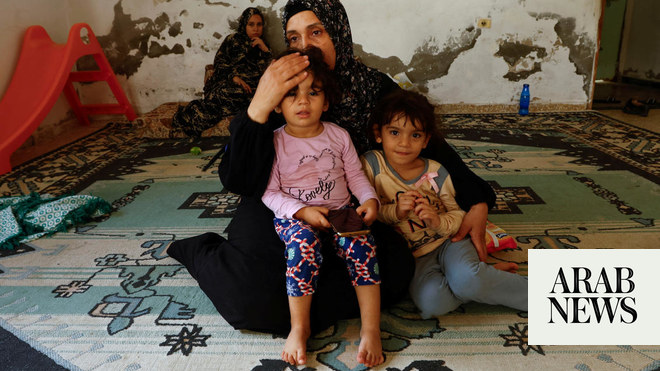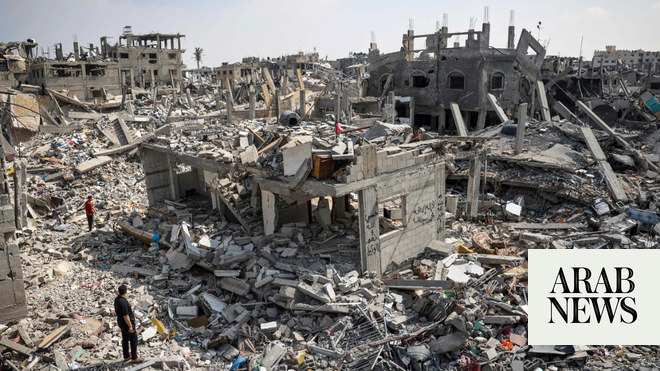
The situation in Gaza is becoming less and less livable: UN official
Last year, international development assistance to the Palestinians shrunk by more than 10 percent compared to a year earlier
GENEVA: The UN said that the situation in Gaza was “catastrophic” after 11 years of “economic siege” and warned that Washington’s decision to halt assistance to Palestinian refugees would create “more misery.”
“The situation in Gaza is becoming less and less livable,” said Isabelle Durant, the deputy head of the UN development agency (UNCTAD).
“It is catastrophic,” she told reporters in Geneva.
In a new report, the UN agency said the Palestinian economy, long stifled by the Israeli occupation, was being hit hard by a sharp drop in international support to the Palestinians, even before Washington’s dramatic cuts.
Last year, international development assistance to the Palestinians shrunk by more than 10 percent compared to a year earlier.
And at $720 million, it stood at just a third of the $2 billion received a decade earlier, the UNCTAD report showed.
That dramatic drop in support came before US President Donald Trump’s government decided to completely halt its funding for the UN agency for Palestinian refugees (UNRWA), which had previously stood at around $350 million a year.
The Trump administration has also scrapped around $200 million in payments by USAID to the Palestinians, and at the weekend said it would cut $25 million more in direct aid to six hospitals that primarily serve Palestinians in Jerusalem.
The declining international support, coupled with “a freeze in the reconstruction of Gaza and unsustainable credit-financed public and private consumption, paint a bleak picture for future growth,” UNCTAD said in a statement.
The widespread restrictions on the movement of people and goods, confiscation of land and natural resources, and the accelerating expansion of Israeli settlements were also damaging, it said.
Wednesday’s report slammed the shackling of the economy in the Palestinian territories, which are struggling with the world’s highest unemployment rate — of more than 27 percent overall and around 44 percent in Gaza alone.
Women and youth are disproportionately impacted by the lack of jobs, it said, with half of Palestinians under the age of 30 out of work, while only 19 percent of women participate in the labor force.
In a report last year, the UN agency said that the Palestinian economy could easily double and that sky-high unemployment and poverty would plummet if the Israeli occupation were lifted.
And in its latest report, UNCTAD suggested that simply removing some of the Israeli restrictions on Palestinian trade and investment could allow the territory’s gross economy to swell by up to 10 percent.
Removing restrictions on Gaza was particularly important, UNCTAD said, warning that the Strip had been “reduced to a humanitarian case of profound suffering and aid dependency.”
Mahmoud Elkhafif, who coordinates UNCTAD’s Assistance to the Palestinian People Unit, said that the agency had not yet analyzed the impact the US cuts might have on the Palestinian economy, but stressed they would certainly result in “more misery” in Gaza especially.
In 2012, UNCTAD warned that the area risked becoming “uninhabitable” by 2020 unless trends were reversed, but on Wednesday the agency said conditions “are worse” than when they made that prediction.
In the past decade, Gaza has been subjected to three major military operations and a continuous and crippling air, sea and land blockade, which have “eviscerated” its productive capacity, it said.
Gaza’s some 1.8 million residents currently count on average a real income per person that is 30 percent lower than in 2000.
And Elkhafif pointed out that half of the people in the Strip were considered food-insecure even before the US announced its cuts to UNRWA, which provides aid to some 80 percent of the population.
Simply lifting the blockade would quickly see its economic growth shoot up by a third, the report said.












